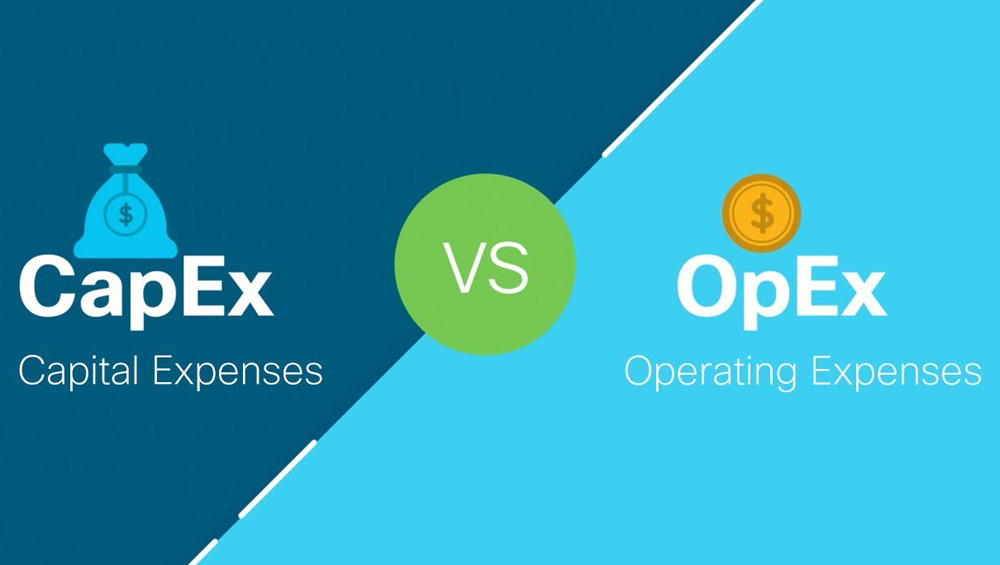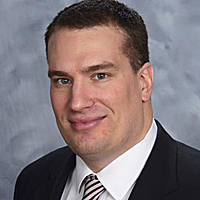
Capex To Opex Shift ‘Makes All The Sense In The World’

Broadcasters’ move from traditional operations using on-premise hardware to software-based workflows running on public cloud platforms comes with a significant change in both how media companies buy technology and how their key vendors market and sell it. Instead of making major capital investments on hardware that can be depreciated over a period of years under established accounting methods, many broadcasters are now looking to either rent technology or consume it as a service, on a pay-as-you-go basis.
This shift from capital expense to operating expense, or “capex to opex,” dovetails with an increased focus by media companies on their direct-to-consumer digital businesses. While the technology costs for a traditional broadcast network distributed by over-the-air, cable or satellite were relatively fixed regardless of how many people were watching, the delivery costs for streaming services vary based on the audience reach, i.e., how many individual program streams are being distributed at any one time. And the real-time analytics that come with digital platforms means that technology costs can now be measured against revenue in a way they couldn’t before.
Broadcasters, Vendors Evolving Together
Broadcasters are looking to bring some of the same discipline to their legacy businesses and change the longtime practice of building facilities like control rooms to meet peak capacity and then have them lie unused for much of the broadcast day or year. Instead, they want to create an infrastructure to meet their average requirements and then “burst” to the cloud during times of high activity.
Vendors have responded, including established hardware suppliers who have retooled their technology to run as software on the cloud. Many are now offering their products on a subscription basis, such as the Software-as-a-Service (SaaS) model, or through other flexible opex-based arrangements.
Even entrenched hardware vendors with a market-leading product are responding to the shift to opex. EVS, whose XT-VIA live production servers are used to handle super slow-motion replays by most major sports broadcasters, has created a cloud-based replay product called XtraMotion. EVS also offers services for major events that bundle its replay servers, asset management, switching and graphics products together as an integrated platform that delivers specific workflows for customers.
The company has done that for the FIFA World Cup for HBS [Host Broadcast Services] and the Olympics for OBS (Olympic Broadcasting Services) using a flexible formula, where there are functions offered for a fee within the event itself besides the traditional rentals for the hardware.

Oscar Teran
“The general direction that the industry is following is to go more towards software solutions that combined with the cloud, public or hybrid, provide us with the ability to enable different business models that are more flexible, and among them are subscription and pay-as-you-go models,” says Oscar Teran, SVP SaaS offering and digital channels, EVS. “That is part of our roadmap.”
Teran says there is a significant difference between a traditional hardware rental and a SaaS platform, which usually involves a service level agreement (SLA). The vendor and its partners offer flexibility and take responsibility for software integration and delivering specific metrics like performance and availability. He uses a pair of eyeglasses as a metaphor.
“Imagine you are buying a pair of glasses from us. You can pay for them once, or we can rent them, or lease them, to you for one week or two weeks, but it’s still the glasses,” Teran explains. “In the capex model, we can additionally offer to you guarantee and support, and in the rental model, we will equally embed those services. However, if you look at the SaaS model and its SLAs, that is different — these glasses are not glasses anymore. It’s the service of being able to look correctly at what is being offered.”
A Win-Win For Broadcasters, Vendors

Gordon Castle
Discovery’s Gordon Castle, SVP technology and operations EMEA Eurosport/Discovery, has unique perspective on the capex to opex shift. Castle previously worked on the vendor side at Ericsson and on the consulting side at PriceWaterhouse Coopers after first spending 22 years at Turner Broadcasting, where he held various technology and operations roles at CNN, and eventually became a senior technology fellow. He says that a move to subscription models that tie the technology spend to the value produced is beneficial to both media companies and vendors.
“In traditional media production and distribution, we’ve had a model where we spend a lot of money, and we hope a lot of people watch,” Castle says. “And you wind it all the way back, and it costs the same amount whether one person is watching or 100 million people are watching. It’s about the same.
“We’ve been steadily moving away from that model for years, where distribution costs are more based on volume. Of course, as we move to more digital services, our interactions with consumers will all be based on volume. So, this absolutely makes all the sense in the world.”
Vendors Shed “Lumpiness”
One of the key benefits for vendors of subscription-based models is that they can smooth out the ups-and-downs of broadcasters’ typically cyclical buying patterns, particularly for publicly traded companies presenting quarterly results to Wall Street investors.
When now privately held Grass Valley was owned by Belden Inc., then-Belden CEO John Stroup openly complained about the “lumpiness” of Grass Valley’s revenues due to its reliance on customer investments in sports production. Grass Valley would do very well in a year with an Olympics or a FIFA World Cup, then follow up with a comparatively weak year when there was no major sporting event.

Josh Stinehour
Josh Stinehour, principal analyst for research firm Devoncroft Partners, closely tracked Grass Valley’s performance for years before its 2020 sale to private equity firm Black Dragon Capital. At the virtual Devoncroft Summit last month, Stinehour noted that Belden spent $800 million acquiring the various companies that now make up Grass Valley but that Black Dragon acquired the business for only $67 million in net cash (plus some other considerations). Black Dragon is now pushing aggressively priced subscription models with Grass Valley’s AMPP cloud platform, while Belden has enjoyed a sharp jump in its stock price since unloading Grass Valley.
“They’ve had a $1.2 billion market cap expansion since selling Grass Valley, almost a doubling of the market cap, and most of it is just valuation expansion,” Stinehour said. “We’ve got to own that, we’ve got to do some things differently. Because shareholder value is a reflection of the sustainability of a business—and happy customers, I would add.”
Stinehour also highlighted the dramatic rise in Avid’s stock since early 2020, which coincided with the editing giant’s shift to SaaS models and subsequent increased subscription revenues. He said that he never thought Avid could reach a $2 billion market cap again (it is now at $1.4 billion), but it is clear that investors don’t value all revenue equally.
“Reasonable people can disagree,” Stinehour said. “But I think what the universe is telling us is that if you have shareholders, or if you want perhaps a better customer relationship, you need to transition as fast as possible to these new revenue models and these new relationship paradigms with your customers.”
Wall Street’s View

Craig Dwyer
Craig Dwyer, VP global cloud and SaaS practice for Avid, concedes that Wall Street values subscription revenues differently. He says from Avid’s point of view, it evaluates SaaS engagements from three different aspects: the technical element, i.e., does it work; the operational impact; and then the financial considerations. He says that certain use cases fit very nicely with Avid’s new “elastic” on-demand model, such as a post-production house that just got a 12-week series to work on and needs to rapidly scale up. But for other customers the move to opex will be more of a long-term “journey,” with perhaps a hybrid on-prem/cloud scheme as an interim step.
“Many of our clients have capital assets, they’ve got their own data centers and physical facilities,” Dwyer says. “And it’s going to take a while for them to map the best way to move fully to cloud, if that’s what even makes sense.”
Brandon Carleton, executive director, technology for the ABC Owned Television Stations, says that he goes through a “capex vs. opex conversation” when weighing each new technology investment. Carleton’s top priority is that the user experience has to be transparent, whether the processing is being done on-prem or in the public cloud.

Brandon Carleton
After that, the overall cost is usually the deciding factor. And while the scalability of the cloud is obviously attractive for bursty workflows like movie production, it doesn’t always make sense for local news.
“For us, a lot of what we do is within a range where it’s not deviating greatly, smaller or larger,” Carleton says. “It’s more of a fixed, known quantity. It makes it a lot easier to look at that. Yes, you give up the scalability, flexibility [by not going to cloud], but if you’re not utilizing that it almost comes with a cost sometimes. Again, when you start to do that breakdown, you realize it doesn’t really make sense.”
Mixed Review Of Vendor Transitions
The NBCUniversal Local Stations believe in the power of the public cloud and want to shift as many live production workflows as possible there over the next three years, says Matt Varney, VP media technology for the group. But Varney says the new subscription-based models have to benefit customers as much as they do suppliers. He gives vendors a mixed review on how they’re handling the capex-to-opex shift.

Matt Varney
“The industry has got a pretty wide range of where it’s at today,” Varney says. “You’ve got some vendors who approach this as, hey, let’s just turn this into a subscription model, so it’s a blank check, and that adds value for shareholders. And we’re just going to charge the same thing, but you’ll pay for it over three years.
“There are others who have approached it a little more intelligently from the perspective of, how does it actually work as a business case for the end user?” he adds. “Are they trying to scale, are they trying to avoid capex costs? What is their objective, and actually build financial modeling around that. Understanding it’s just not all instant upside for the vendor and downside for the end user — it’s got to be a win-win for both. Some are doing a really good job of that, and others are doing a pretty poor job of that.”
Harder Opex Shifts
While some products like editing software lend themselves to running in the cloud on a SaaS basis, other pieces of broadcast technology are more difficult to shift to an opex model, particularly high-performance specialized hardware that rely on internal components like custom-designed chips. Those also tend to be products that come with hefty development costs that vendors are typically still trying to amortize.
Another challenge for the capex to opex shift is the change in accounting that it requires. Big media companies have traditionally reported their quarterly earnings using EBITDA (earnings before interest, taxes, depreciation and amortization), keeping hardware depreciation “below the line” when assessing profitability. Moving a lot of their technology spend to operating expenditures would require a change in their accounting in order to accurately reflect performance — and likely some investor relations outreach to explain the change to Wall Street — and that might be unpalatable to some.

Louis Hernandez Jr.
Black Dragon Capital founder and CEO Louis Hernandez Jr. says the accounting issue with SaaS had already been resolved in other industries like banking technology. He predicted the same would happen in media.
“In terms of the accounting, it’s a short-term issue,” Hernandez says. “And yes, it changes first for vendors like us — how you price, how you package, training your sales team, changing the price book, changing your deal desk. For clients, all of their internal accounting mechanisms of a normal capex model where they’re depreciating over a number of years and doing a refresh cycle.
“[But] the benefit is two-fold: one, because the tech is changing so fast, and we’re a good example, you’re continually refreshing,” he adds. “And so, you’re remaining more competitive for the same opex price, as opposed to the only way you could accelerate in the old model was to spend another huge boatload of money on capex. That’s one big reason. Two, a very predictable cost structure. Once you manage your revenue line, you can manage your EBITDA better.”
Perhaps a bigger stumbling block in the move to opex is the tendency of media companies to look at their technical operations as a cost center that is always ripe for further cutting, a mindset Stinehour has lamented in the past. Several broadcasters said that media companies’ technology spend should actually be increasing, not getting winnowed, given their rapid expansion of streaming content. Either way, Varney says it is time for vendors to move to a new way of doing business.
“I think as the vendors who are more comfortable in this space are coming to maturity, you’ll see a pretty significant shift in who some of the major players are in our scene,” Varney says. “The ones who are holding on to those legacy capex models and just hoping they can continue to burn down the R&D investments they made on that legacy hardware, that they hope to keep pulling out over the next few years, I think their market share will start to crumble.”
































Comments (0)